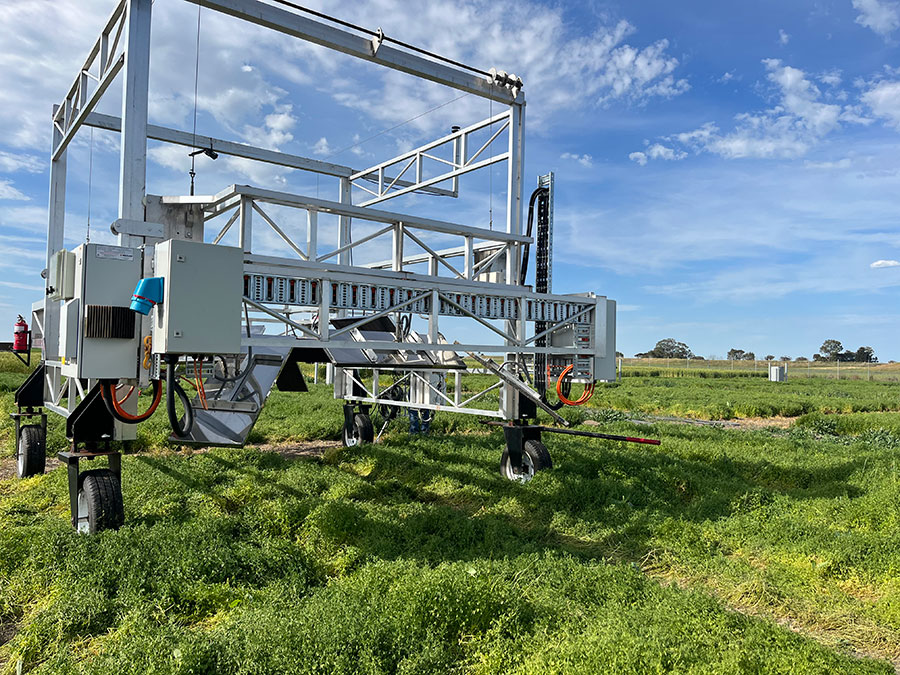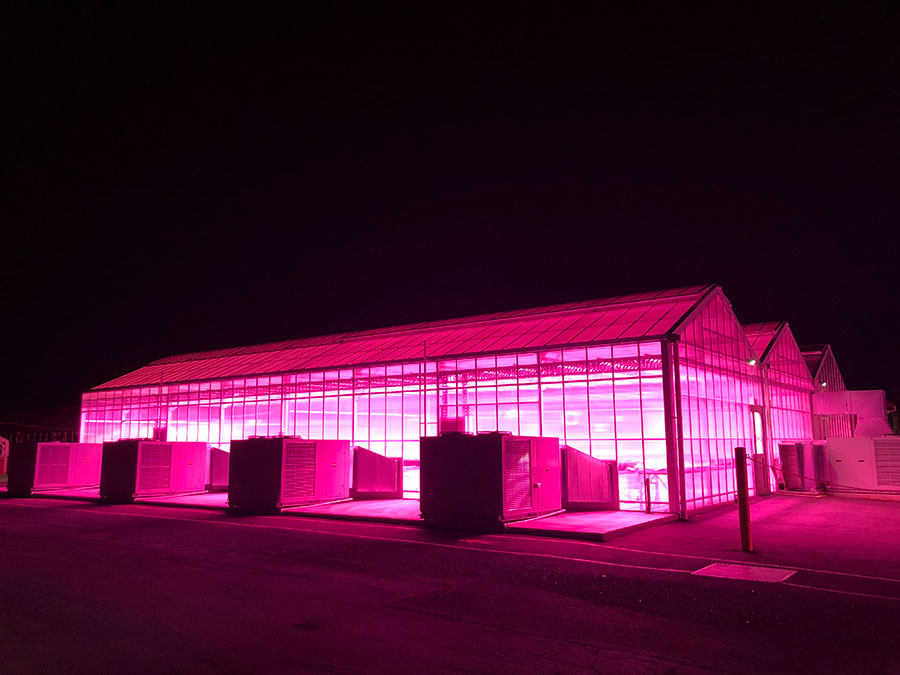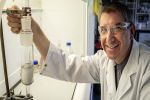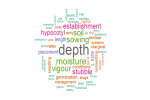Key points
Geneotype
The genotype is the set of genes responsible for unique traits or characteristics
Phenotype
The phenotype is an organism’s physical appearance or characteristic
A major GRDC investment push within the National Lentil Breeding Program has doubled its capacity to develop innovative germplasm while also speeding up breeding times.
The increased investment has delivered new infrastructure to support scaling-up breeding and trait-discovery technology. Some of it is so advanced that it can now target the complex traits needed to expand lentil production into northern New South Wales and Western Australia.
The breeding program is located at the Horsham SmartFarm in Victoria and is overseen by co-investor Agriculture Victoria (AgVic).
Associate Professor Matthew Hayden, AgVic’s director of plant sciences, says the breeding program’s improvements were structured into a fully integrated lentil improvement pipeline aligned with the needs of commercial breeders.
Framing it all is a newly developed Grains Australia varietal classification framework based on quality characteristics that help breeders meet market demands and opportunities (see breakout box).
“From the first step in the development pipeline to the last, the program now produces data that funnels into algorithms that turbocharge our ability to select and then combine the genes that best serve growers across an expanding cropping zone,” Associate Professor Hayden says.
Our cutting-edge technology combined with our scientific capabilities, make possible gains that were previously out of reach.
Some of the new infrastructure includes:
- accelerated breeding facilities – glasshouses and specialised lights that can process up to four generations of lentil plants per year and at scale;
- increased automation for DNA genotyping, processing the seeds of between 10,000 and 15,000 novel lentil lines a year;
- advanced phenotyping infrastructure driving trait discovery work and selection innovations;
- irrigation infrastructure including new boom irrigators; and
- additional equipment and seed storage sheds to accommodate increased breeding capacity.
GRDC is supporting further co-investment with AgVic in infrastructure, including:
- the Horsham Smart Water Facility, which recycles and desalinates wastewater from the township using reverse osmosis to produce agricultural-grade water; and
- the Horsham FATE (Free Air Temperature Extreme) facility to test for temperature stress under realistic open field conditions.
AgVic lentil breeder Dr Arun Shunmugam says the lynchpin for the program is AI-driven algorithms embedded in genomic selection technology.
These algorithms match crop performance data against differences in genes across the lentil genome. When provided with sufficient phenotypic and genotypic data, this technology can assign a breeding value to a myriad of genetic differences.
These allow breeders to predict the best gene combinations for different farming systems. This technology is now starting to bear fruit with two lines entering the National Variety Trials system. ALB2423 and ALB2424 are the first potential releases developed with the new AI tools.

An individual FATE trolley uniformly heats a 2.5m x 5m area above the crop canopy. They are designed to allow for broad research questions around temperature stresses and to accommodate a range of experiments for cereals, oil seeds and pulses. Photo: AgVic
The power of data
Automated sensor-based technologies are used to gather phenotypic data. Dr Shunmugam says that remotely piloted aircraft are flown over trial sites up to six times during a growing season.
These flights gather imaging data on thousands of plots, capturing information about early vigour, plant height, lodging and disease prevalence, as well as several phenology traits such as flowering time.
Sensor technologies are also used to measure important seed quality traits including size, shape, weight and market class at AgVic’s grain quality laboratory at the Horsham SmartFarm.
“The way AgVic has set up our genomic selection technology means that as breeders, we start by designing a ‘product profile’, such as a small red lentil for a high-rainfall region,” Dr Shunmugam says.
The algorithms then simulate millions of crosses and identify the optimal parents and crosses to produce the best version of that product as rapidly as possible.
Algorithm-driven selection processes include traits that are universally needed by growers – from yield and grain quality through to Ascochyta blight resistance and even herbicide tolerance. This ensures the final cultivars are locally adapted and high yielding.
The speed breeding facility then allows breeders to rapidly produce desired lentil lines identified by the algorithm-driven process.
Accelerating gains
Improved field irrigation capacity means that lentil breeders can increase seed production over summer to ensure sufficient supply for field trials in subsequent seasons, as well as rapidly bulk seeds for commercialisation partners.
The capacity to run field trials has also been enhanced and now includes sites in the main wheatbelt in WA and northern NSW as part of efforts to expand the lentil production zone.
Dr Shunmugam estimates that the rate of genetic gain possible in the breeding program has been enhanced tenfold while costs have been reduced by 30 per cent.
At its most efficient, he adds, the new pipeline can reduce the process of identifying the best lines to select as parents from 10 years down to six months.
Associate Professor Hayden says: “GRDC investment in the National Lentil Breeding Program has delivered an ability to maintain breeding work as a year-round operation at scale, underpinned by the power of genomic selection and speed breeding technologies.”

An accelerated breeding facility, with glasshouses and specialised lights, can process up to four generations of lentil per year at scale. Photo: AgVic
WA and NSW expansion
Supporting the expansion of lentil cropping into WA and NSW are two GRDC co-invested pre-breeding projects that focus on increasing tolerance to heat and acid soils.
Field trials for these projects are being undertaken in Narrabri and Wagga Wagga in NSW and Merredin and Shackleton in WA.
Dr Garry Rosewarne, AgVic’s acting research director – plant production sciences – says this work builds on previous GRDC co-investment through the Victorian Grains Innovation Partnership. The earlier investment developed crop growth models for lentils that can look at the intersection of plant physiology and agronomic practices.
“For instance, we interrogated the models to define optimal sowing times,” Dr Rosewarne says.
We found that in certain regions of South Australia, we can increase yield 10 to 20 per cent by sowing one month earlier when the season allows it.
These models will also be the basis for further heat tolerance research, the outcomes of which will have implications for not only breeders but also growers and agronomists.
Importantly, the breeding program works closely with the soil and agronomy research groups at the Horsham SmartFarm to better understand complex gene-by-environment-by-management interactions. Field-based agronomy is critical for breeders to better adapt lentils to soil, agronomy, environment and seasonal conditions across grain growing areas.
This is further aided by GRDC investment (and AgVic involvement) in the National Pulse Agronomy project (NaPA). This five-year project got underway in 2021. It aims to understand environmental constraints on pulse yields, including lentils.
The project has a strong focus on water stress and temperature, and the impact of these on nitrogen fixation. It is also exploring crop phenology – sowing date and the reproductive stage length – as a way to manage or avoid losses.
Ultimately, NaPA will deliver variety by management (GxM) packages with information about different profit/risk scenarios. Package information will be based on the combination of experimental data and crop modelling.
To achieve this aim, a multidisciplinary team has been assembled from the CSIRO, NSW Department of Primary Industries and Regional Development, AgVic, South Australian Research and Development Institute, Department of Primary Industries and Regional Development WA and University of Queensland.
Each group is conducting similar experiments within their local environments using similar protocols. The results will be analysed nationally.
Sensing technology for quality traits
Quality traits are specific for each export market and determine grain prices. For pulses, the traits are predominantly defined by physical seed characteristics such as seed size, colour and lack of defects.
Recently, seed composition has also become important as pulses are used as plant-based proteins. A now-completed GRDC investment developed light-based sensing technologies to measure quality traits in lentils, field peas, chickpeas and faba beans.
This multispectral image analysis technology resulted in two key outputs: a suite of algorithms to rate physical seed traits and models that quantify seed damage due to disease and abiotic effects. Both seed traits and seed damage impact marketability.
The project also developed a near-infrared spectroscopy (NIR) and NIR-hyperspectral method for measuring pulse protein content. This work helps to address increasing global demand for plant-based protein sourced from pulses.
Overall, these advances allow for high-throughput screening methods that identify desirable traits to include in commercial cultivars to ensure competitiveness in the export market.
More information: Matthew Hayden, matthew.hayden@agriculture.vic.gov.au
Sukhjiwan Kaur, sukhjiwan.kaur@agriculture.vic.gov.au
Garry Rosewarne, garry.rosewarne@agriculture.vic.gov.au
Arun Shunmugam, arun.shunmugam@agriculture.vic.gov.au

























































